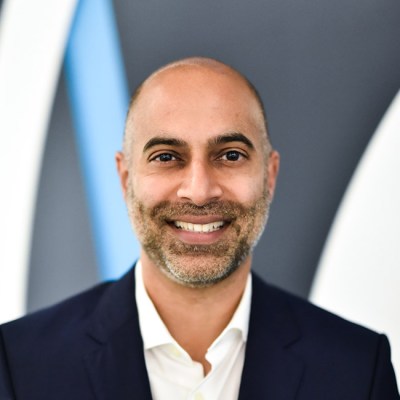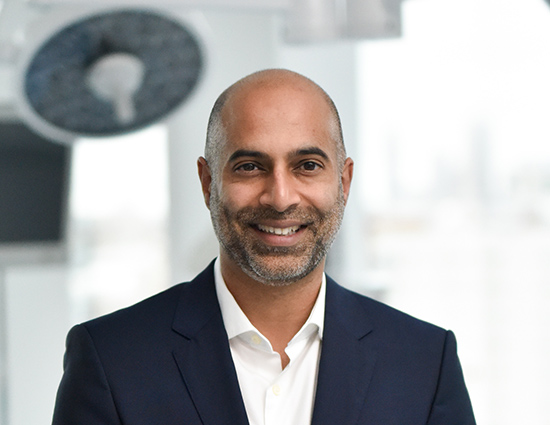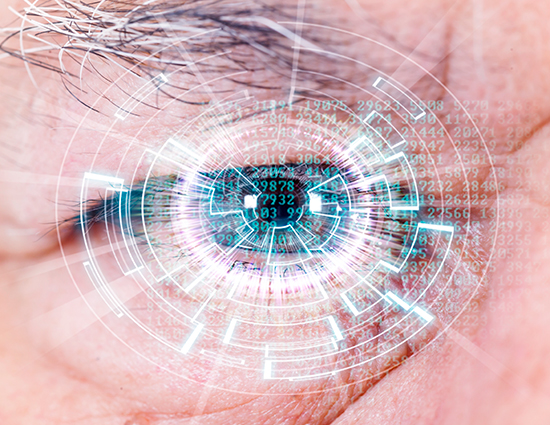As a neurosurgeon, I know what a difference technology can make to a patient with serious disease. Over the years at Thomas Jefferson University, I have implanted electrodes in the brains of more than 500 people with Parkinson’s disease. With that one procedure, their tremors can be reduced and their movement improved. It is life changing in the most profound way possible.
Recently, I set to thinking about how the future could look for people with Parkinson’s Disease. What would their treatment be like in, say, 2030? That’s just eight years from now, not long in terms of medical advances. But just think how cell phones have developed in the past 10 years. With the rapid pace of change in digital technology showing no signs of slowing, could an equally exciting technological revolution be in store for people affected by neurological disease?
I’ve been exploring the future of medical care with Cambridge Consultants, and in our video ‘A day in the life of a Parkinson’s patient in 2030’ we envisaged a woman named Judy who experiences remarkable and effective treatment, thanks to a global, digital ecosystem for healthcare.
Implant ecosystems of the future
Instead of a neurosurgeon like myself carrying out the surgery, we imagined augmentation by a small portable surgical robot precisely placing a micro-implant deep into her brain. This smart active implant delivers both electrical stimulation and drugs to target brain and nervous system function. The procedure takes only two hours and she is back home that same night.
Judy has a weekly check-up but, as it is a tele-consult, it causes minimal disruption to her daily life. Ahead of the consultation, her clinician receives data on her state of health from the implant. Judy also uses smart fabrics, including a glove with embedded sensors, to record her tremors, gait and balance. In this way, via Judy’s smartphone, her clinician receives a range of physiologic data including her dopamine levels, fine motor control, gait and balance and neural activity. Judy also keeps a cloud-based patient diary which contributes insights to her patient dashboard. Progress is monitored and tracked in detail without significant interference to her everyday life.
Thanks to the ecosystem in place for Parkinson’s Disease, Judy’s clinician can compare her results with those of more than 10,000 other patients, allowing her clinician to monitor her with exceptional insight. Based on how her disease is progressing she can be offered bespoke virtual recovery coaching. This uses a brain/machine interface to help Judy provide feedback on her activity and cognition. She undertakes exercises such as dot-to-dot drawings on screen. Analysis of this, through AI, helps to assess and assist Judy’s progress. It is small wonder that, by the end of her tele-consult, Judy feels happy and reassured. She relaxes back in her chair and thinks to herself that she now feels confident enough to book a holiday.
Partnering to enable ecosystem innovation
My vision of this highly connected medical future is born of a mixture of optimism and frustration. I’m hugely inspired by what can be achieved in the world of medtech right now, thanks to the possibilities opened up by digital connectivity. As well as my everyday work as a neurosurgeon, I have become very interested in the opportunities for medicine in terms of technology, engineering and the digital world. I like to call myself a technology activist. And, above all, scaling up tech to reach more patients is my passion.
I’ve been collaborating the past few years with a British-American technology and engineering firm with a strong interest in med-tech. Based in both Boston and Cambridge, UK, Cambridge Consultants is home to some truly creative and innovative thinking. They specialise in next-generation robotics, smart active implants, critical care systems, and digital surgery. I got talking to them about the world of the active implantable medical device (AIMD) and was fascinated by the way they seek to solve high-level problems, from the patient’s point of view.
Together we’ve explored the concept of an ecosystem that could support medicine internationally, combining the efforts of surgeons, medical device companies and engineers to improve the patient journey, as told in Judy’s story. This isn’t just a pipedream – this could be a reality, just look at what Apple has created in terms of an international support system for its products. It can be done.
Yes, it takes cooperation, which is not something that the medical world has been particularly good at until now. As a society, we have just sent a space probe the size of an SUV into space and successfully landed it on Mars, 44 million miles away. Closer to home, Cambridge Consultants were the R&D partners on the Iridium satellite project which now offers phone coverage across the whole surface of the earth. In the field of medtech, they developed the first ever wireless Bluetooth pacemaker implant. Amazing things are now possible. The question is, will they all get the chance to become reality?
With smart AIMDs, robotics, connectivity, AI and machine learning, it is no exaggeration to say that the treatment of diseases such as Parkinson’s could be revolutionized within the decade. This is what prompted me to sit down, with an open mind and a blank sheet of paper, and say to myself: ‘Just imagine – what will your patients be experiencing in the year 2030?’
My radical vision is not all rosy, however. I am by no means confident that even half of what I have conjured up for Judy will come to pass, at least not within such an optimistic timeframe. The stark fact is, most of the care she receives in 2030 could already be delivered today. We have the engineering; we have the technology. What we do not have, however, is the coherent connectivity and organization partnerships needed to make things work as they could.
Transforming treatment of Parkinson’s Disease
I participated in patenting a directional electrode by Intelect Medical for the treatment of Parkinson’s Disease back in 2003. It has indeed been manufactured – but it took the best part of a decade for that idea to come to fruition. As an immigrant myself from India, with strong family ties overseas, I travel a lot in the developing world. I see how cell phones have revolutionized life in India and China.
Thinking of our specific example of Parkinson’s, I am convinced that technical advances can do the same for patients in the developing world. Patients around the globe could receive expert follow-up, support, monitoring and coaching just as Judy does, via devices. In this way, Parkinson’s disease globally could be treated so much more effectively, for a fraction of the cost we would expect today. It would transform lives for these hard-to-reach patients.
I realize what I am talking about is a major disruption to the current state of play. As I see it, the two biggest stumbling blocks to progress are the regulatory system and the economics currently ruling the medical establishment. We live in a world where information and communication can fly around the globe without hindrance. But, alas, we also live in a world where entrenched systems mean that medical records are still transmitted by fax machine.
Today, the economic drivers to improve treatment are stifled and the glacial pace of regulation means that a simple development in therapy can take years, if not decades, to move from idea to implementation. But think of the change that could be possible with a true partnership of medical device engineers, surgeons, nurses, hospitals and drug companies, all working together. If we could achieve a global ecosystem for medical care, harnessing the power of digital learning and communication, so many more patients could be helped better and sooner. The question is, what are we waiting for?
Dr.Ashwini Sharan, Professor of Neurosurgery, Thomas Jefferson University, Pennsylvania, was interviewed by Rahul Sathe, Vice President Surgical Innovation Cambridge Consultants





